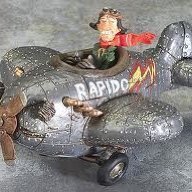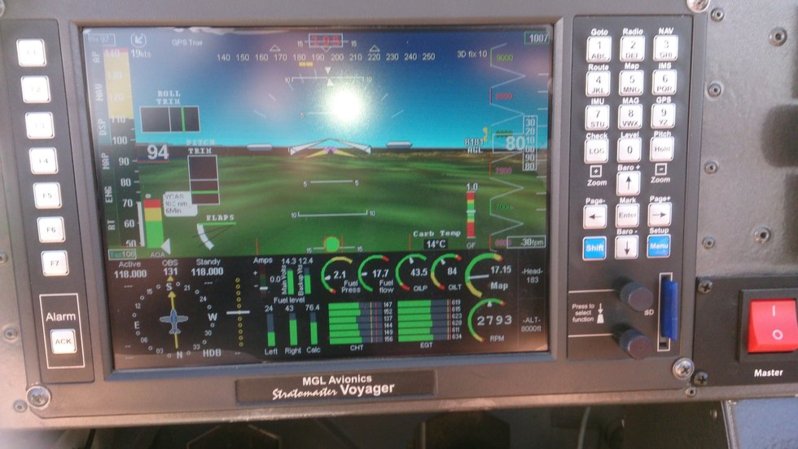-
Posts
255 -
Joined
-
Last visited
-
Days Won
2
Content Type
Profiles
Forums
Gallery
Downloads
Blogs
Events
Store
Aircraft
Resources
Tutorials
Articles
Classifieds
Movies
Books
Community Map
Quizzes
Videos Directory
Posts posted by dlegg
-
-
Was that the flying school one?
-
This site shows a picture of a Zodiac CH601XL
I am appalled that another fellow pilot has not made it home, but also appalled at such false media reporting, creating false hype.
-
 1
1
-
-
Are those girls from Thunderbirds?
-
You are kidding right? 205F = 96 C. Mine don't go below 145C in cruise.......I have removed the LCHeads from my Jab done a 2.5 hour flight temps where around 190 - 205 F on cruise I am happy with that. -
-
Several men are in the locker room of a golf club when a mobile phone on a bench rings. A man engages the hands-free speaker function and begins to talk. Of course, everyone else in the room listens in.
Man: "Hello."
Woman: "Honey, it's me. Are you at the club?"
Man: "Yes."
Woman: "I'm at the mall and found this beautiful leather coat. It's only $1,000. Is it OK if I buy it?
Man: "Sure, go ahead if you really like it."
Woman: "I also stopped by the Mercedes dealership and saw the new 2015 models. I saw one I really liked."
Man; "How much?"
Woman: "$98,000."
Man: "OK, but for that price make sure it comes with all options."
Woman: "Great, I love you honey! Oh, and one more thing, the house I wanted last year is back on the market. They're only asking $950,000."
Man: "Well, then go ahead and make an offer of $900,000. They will probably take it. If not, go the extra 50 thousand if you think it's really a good price."
Woman: "OK, I will. I'll see you later! I love you so much! You're so generous!"
Man: "You're worth every cent, darling. Bye!"
The man hangs up. The other men in the locker room are staring at him in astonishment, with jaws hanging.
The wonderful husband turns and laughs as he asks: "Anybody know whose phone this is?"
-
 5
5
-
-
-
I am finding that when bringing up a waypoint from the map, then going to wx/notams that the text box is too small and missing parts of the wx. Anybody else having this problem and what is the fix? On a mini...
-
Be very wary of carbon fibre in any aircraft. In the event of a crash-fire carbon gives of noxious fumes and must be disposed of in a regulated manner (as asbestos does). An RV-6 had carbon parts fitted, crashed at Gatton and fire crews had to dispose of carbon parts. Could very well push up insurance or leave you with a large bill......
-
 1
1
-
-
I carry a GPS Epirb in my plane, very accurate. Just might take it on commercial flights with me so the plane can be found if it goes down..

-
 1
1
-
-
Raizo, call things what you like: you made it:yes:
Welcome to a very select club. Lots of people start building a plane but never finish. Life, or the magnitude of the job hits home and they give up.
Congratulations, enjoy the flying and the years ahead.
-
 1
1
-
-
So what really happened to MH370
-
So how is the android version compared to ipad, all the same features there?
-
After 35 years, mailman George decided to retire. On his last day, he makes his usual rounds.
When he arrives at the first house, the whole family comes out, congratulates him, and sends him on his way with a tidy gift envelope.
At the second house, they present him with a box of fine cigars. The folks at the third house hand him a selection of terrific fishing lures.
At the next house, he is met at the door by a strikingly beautiful woman in a revealing negligee. She takes him by the hand and leads him up to the bedroom, where she blows his mind with the most passionate sex he has ever experienced.
When done, they go downstairs, where she fixes him a giant breakfast. As she pours him a cup of coffee, he notices a dollar bill sticking out from under the cup's bottom edge.
"All this is just too wonderful for words," he says, "but what's the dollar for?"
"Well," she says, "last night, I told my husband that today would be your last day and that I wanted to do something special for you. I asked him what to give you. He said, 'Screw him. Give him a dollar.' But breakfast was my idea."
-
 3
3
-
 3
3
-
-
Nearly 2015 now and the cherished internal combustion engine has been around a long time since Daimler wove his magic, so why on earth isn't EVERY engine available capable of running to 80000hrs with just oil changes?
-
 2
2
-
-
-
Sonex sell a laser cut baffle kit for the Jab at US$250. Has anyone tried this out?
http://www.sonexaircraft.com/eshop/cart.php?target=product&product_id=16561&category_id=335
-
Spielberg obviously had a hand in directing too!!
-
I found I had to disconnect naca duct on cowl to mixer box. With extra pressure the engine would run very rough at full revs. Runs fine now. Put a filter on naca to slow flow into cowl, but still plenty of fresh air to mixer box. Carb inlet temps also higher. Egt's much more even as a result. Full power climbs and middle cyls always run coolest egt.
-
Brilliant, can see a market for those...
-
This is a really good article about cooling the Jab
http://www.customflightcreations.com/sitebuildercontent/sitebuilderfiles/cooling102.pdf
Relates to fitment in a Europa but will translate to all aircraft.
-
-
That fuel flow looks a tad low for a 3300 @ 2800 RPM.
Bob
I read conflicting reports on recommended head temps for cruise....Jabiru don't publish a range to aim for, rather just a max to avoid.
Limbach recommend cruising at between 150-170c , but to keep below 200c at all times, as per http://byrongliding.com/wp-content/themes/common/docs/Limbach_Tech_Bulletin_44.1.pdf
That fuel flow is with standard jab bing and drops down to 17lph at 2750 rpm, goes up markedly above 2850. I presume the tapered needle is doing its job....
-





Vernier throttle
in Engines and Props
Posted
Is it normal to have a lot of "slop" when using the vernier, as in winding the knob from out to in or vice versa? Mine can be wound at least 1 full turn before moving the cable in either direction. Apart from that, a great throttle.